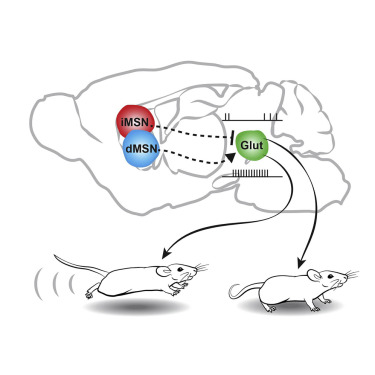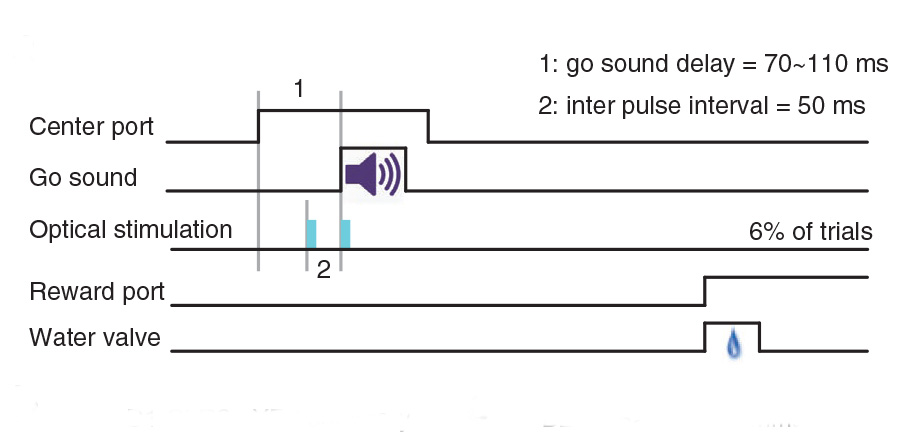Tag: A Moses Lee
-

Cell-Type-Specific Control of Brainstem Locomotor Circuits by Basal Ganglia
The basal ganglia (BG) are critical for adaptive motor control, but the circuit principles underlying their pathway-specific modulation of target regions are not well understood. Here, we dissect the mechanisms underlying BG direct and indirect pathway-mediated control of the mesencephalic locomotor region (MLR), a brainstem target of BG that is critical for locomotion. We optogenetically dissect…
-
Review: Between the Primate and “Reptilian” Brain: Rodent Models Demonstrate the Role of the Corticostriatal Circuits in Decision Making
Decision making can be defined as the flexible integration and transformation of information from the external world into action. Recently, the development of novel genetic tools and new behavioral paradigms has made it attractive to study behavior of all kinds in rodents. By some perspectives, rodents are not an acceptable model for the study of…
-
Identification of a Brainstem Circuit Regulating Visual Cortical State in Parallel with Locomotion
Sensory processing is dependent upon behavioral state. In mice, locomotion is accompanied by changes in cortical state and enhanced visual re- sponses. Although recent studies have begun to elucidate intrinsic cortical mechanisms underlying this effect, the neural circuits that initially couple locomotion to cortical processing are unknown. The mesencephalic locomotor region (MLR) has been shown…
-

Transient stimulation of distinct subpopulations of striatal neurons mimics changes in action value
In changing environments, animals must adaptively select actions to achieve their goals. In tasks involving goal-directed action selection, striatal neural activity has been shown to represent the value of competing actions. Striatal representations of action value could potentially bias responses toward actions of higher value. However, no study to date has demonstrated the direct effect…
